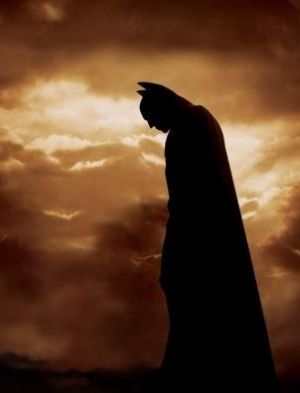The New Age of Comics & Culture (Part 2 of 4!)
By Zak Edwards
October 7, 2012 - 11:53
Hi, and welcome back to this discussion of the future of media and the possibility of the New Wave, a period of renewed faith in superheroes as good guys predicted by comic scribe Grant Morrison. Please read part one here so we can hit the grounding stumbling, I mean running.
 |
We are now over the eleven year anniversary of 9/11 and much of what the media has put out over those years has many topics in common: the inability and totality of our governments, the instability of our own existence, the safety/freedom continuum and our internal relations against a vague (but still racialized) threat. Much of what we discuss has a simultaneous discourse of acceptance and Othering, the process of ensuring distinct separation of one group from the dominant (and let’s be honest, the white male) group. But I think things are changing and I think James Cameron’s Avatar serves as a last bastion of 9/11 fiction, not because it is poignant (since it isn’t), but because of its problematic and garbled message and reception.
 |
The film centers on a group of people who can literally transform into another species of people and use this ability to infiltrate the alien species on a resource rich planet. The plan falters, however, after the protagonist ‘goes native’ and falls in love with both the people and the alien romantic interest. The humans in Avatar are generally white and American, motivated by corporate and nationalist (in this case, speciesist) discourses that require the destruction of the environment for imperial and capitalist gain. The humans are unrelenting and technologically superior while the aliens are primitive, based exclusively on black and Native American actors and cultures, and enjoy a primitive existence that emphasizes being one with nature (literally, they can ‘plug-in’ to other creatures and the environment). The major problem with the film and the interpretation of the Home Tree destruction is this: the metaphorical framework in which the movie exists relies on a both/and identification with the Other species, in which they are both exotic and reflections of the dominant culture (the humans). Through identifying with the Na’vi, we can see redemption for our human antagonists (ourselves) while indulging in a sort of fascination with the primitives who need the white man to help them defeat ourselves. It’s obviously wrapped up in a lot of colonial and racial problems, but identifying the Home Tree destruction as 9/11 doesn’t make sense; it retroactively makes us identify with ourselves and makes the Other the destroyers. Essentially, the racialized group becomes the white males while the Na’vi remain the destroyers. For the identification to work, we have to continually occupy two groups that are incompatible. In short, it’s impossible for the Na’vi to destroy their own Home Tree (and for the Americans in the film to have their home destroyed), but that is exactly what this interpretation does, all the while ensuring the white males remain the dominant, innocent group.
This confusion over the metaphor of the Home Tree marks 9/11 itself as a dead metaphor, we can no longer draw a significant meaning out of the action. Instead, we are simply confused by our identification with the destroyers and the victims while still believing in both. I believe this confusion has led to two distinct and recent phenomenon: the rejection through cynicism and disinterest of new 9/11 fiction and the resurgence of an anti-cynical discourse in new fiction, born from Avatar’s confusion, and inherent horrifying reflection of Western culture’s continued racism, but predicted by Grant Morrison’s exhaustion with the Dark Age of comics. Next time, I want to look at the reactions to works that seem to be still relying on the tropes and ideas discussed here and before, locating the issue in perhaps a larger framework other than simply the shows themselves, but their audiences and critics as well.
Related Articles:
